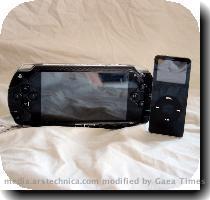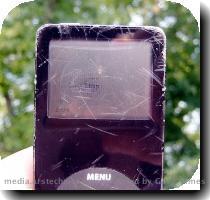HEALTHBEAT: Newer generations of hearing aids promise improvements from swimming to Bluetooth
By Lauran Neergaard, APMonday, December 28, 2009
Now hear this: Swim-proof hearing aids to get test
WASHINGTON — They’re not your grandpa’s hearing aids.
Today’s newest models range from the completely invisible — it sits deep in the ear canal for months at a time — to Bluetooth-enabled gadgets that open cell phones and iPods for hearing-aid users.
Now the maker of that invisible hearing aid is going a step further — attempting a swim-proof version. About 60 swimmers begin testing a next-generation Lyric next month, to see if stronger coatings can withstand at least three swims a week, allowing the device to repel the water that short-circuits regular hearing aids.
If so, expect to see it marketed to active seniors who increasingly find the pool a gentler form of exercise than pounding the pavement.
“It’s my preferred exercise,” says Kathy Burkhard, 62, of San Jose, Calif., who is anxiously awaiting the results. She already swims with her Lyrics, her ears bundled against the water with special earplugs, a water-resistant headband and a racer’s cap. “I do it well and I enjoy it and I wasn’t ready to give it up.”
It’s part of a quiet revolution in hearing technology, to increase the usefulness and comfort of devices that too many people still shun.
“Stigma is one of the biggest obstacles we face,” says Dr. John P. Weigand, audiology director at the State University of New York’s Downstate Medical Center.
More than 30 million adults in the U.S. have some degree of hearing loss. The National Institutes of Health says most could be treated with hearing aids yet only about one in five people who could benefit uses them.
Why? Many people simply don’t know, or accept, that they need one. Hearing loss can come at any age, from disease or genetics or not protecting your ears from loud noise. But it becomes more common with aging; federal statistics show one in three people older than 60 have hearing loss. And it can creep up, as often people first lose the ability to hear higher pitch before they notice wider problems.
Then there’s reluctance to try hearing aids because of the appearance — or because of longtime problems with sound quality, particularly the ability to hear well in noisy environments. And there’s the cost, which varies around the country but can range from $1,500 per ear for more basic designs, up to $3,300 per ear for premium brands. Only some insurance pays; Medicare doesn’t.
Enter the newer technology, which hasn’t eliminated the sound problems but, specialists say, does improve them for people who pick the right option for their lifestyle and hearing needs:
—The Lyric is inserted 4 millimeters from the eardrum, aiming to funnel sound more naturally. It’s not the first deep-in-the-canal hearing aid — others have left the market — but is the only extended-wear version. It stays in the ear for up to 120 days, until the battery wears out. A yearly subscription of $1,650 for each ear covers the fitting and replacements.
Seals protect the Lyric from the moisture of showers and earwax, while maintaining the right pressure to avoid pain in this very delicate ear region, explains Dr. Robert Schindler, professor emeritus at the University of California, San Francisco, and a board member with manufacturer InSound Medical Inc.
Schindler, a pioneer of cochlear implants for the deaf, helped develop the Lyric when his mother asked why he didn’t improve her hated hearing aids. But it only works for a fraction of people, those with mild to moderate hearing loss whose ear canals aren’t too small.
—A simpler approach hides the hearing aid behind the top of the ear and just a thin wire, the receiver, snakes into the canal, says SUNY’s Weigand. About two-thirds of his patients opt for those.
—Directional microphones are cutting background noise even in some less expensive hearing aids, going into a zoom mode to emphasize voices straight ahead of the wearer.
“I hear that complaint much less than I heard it five years ago,” Weigand says of background noise. “The ambient sounds are never going to go away, and you need to hear them to be aware of your environment, but typically people will look at what they want to hear.”
—And more and more hearing aids are compatible with Bluetooth wireless technology, hugely appealing for tech-savvy baby boomers who’ve run into problems in the past with hearing aids that didn’t work with their cell phones, Weigand says. A streamer, made by companies including Siemens and Phonak, is worn around the neck or in a pocket where it wirelessly funnels sound from Bluetooth devices — cell phones, iPods, a car’s GPS navigator — straight into the hearing aid.
Choosing a version “is a balancing act between the person’s dexterity, their lifestyle, the cosmetic concerns they have,” says Weigand. “We have to give them options.”
EDITOR’s NOTE — Lauran Neergaard covers health and medical issues for The Associated Press in Washington.
Tags: Bluetooth Technology, Communication Technology, Consumer Electronics, Diseases And Conditions, Hearing Loss And Deafness, North America, Seniors, United States, Washington, Wireless Technology
|
July 28, 2010: 12:12 am
i wants Earcanal hearing aid ranging from Rs.3000-5000 at Vijayawada or Hyderabad, imported or indigenous.How to order it or through your concern.Mail to my id at an early date. |
|
July 14, 2010: 7:31 pm
It’s nice to have these kinds of reviews for hearing aids. More and more people use it but most people recommend using because it gives comfort to people who uses it. |


B.V.R.K.Raao.